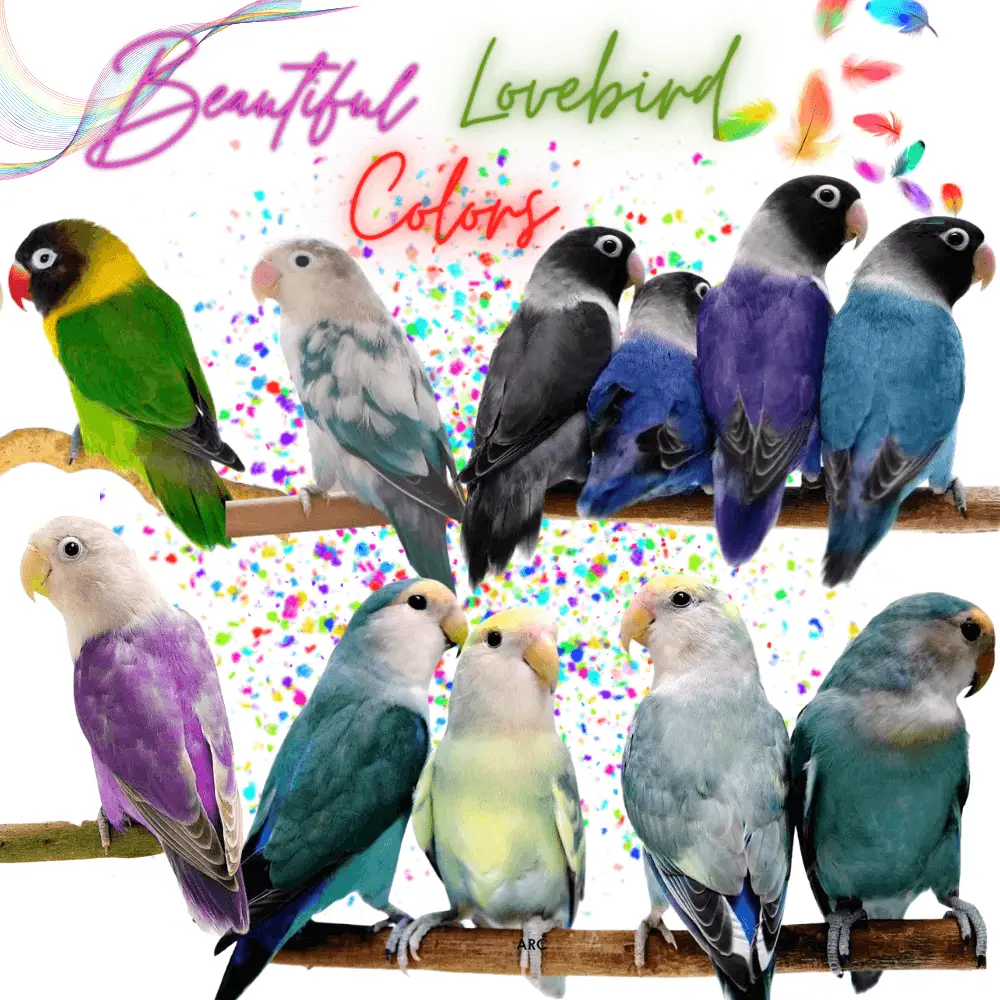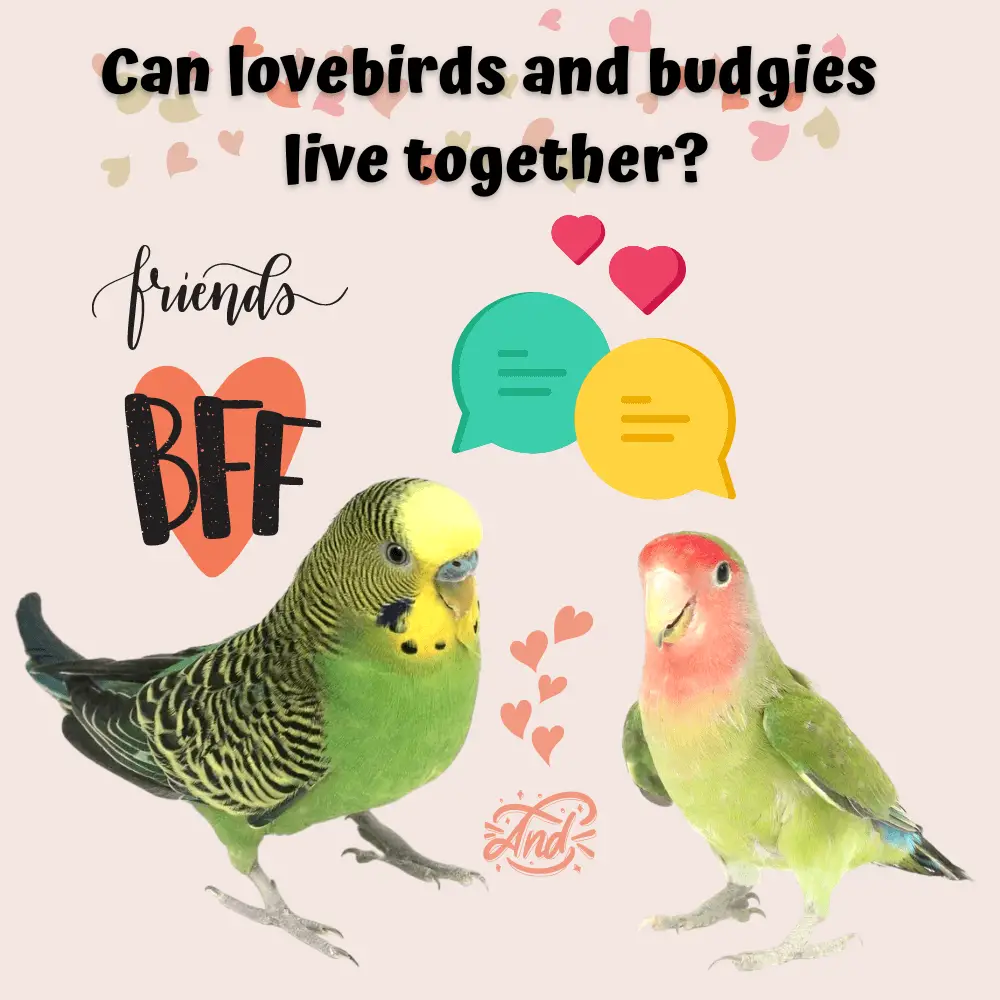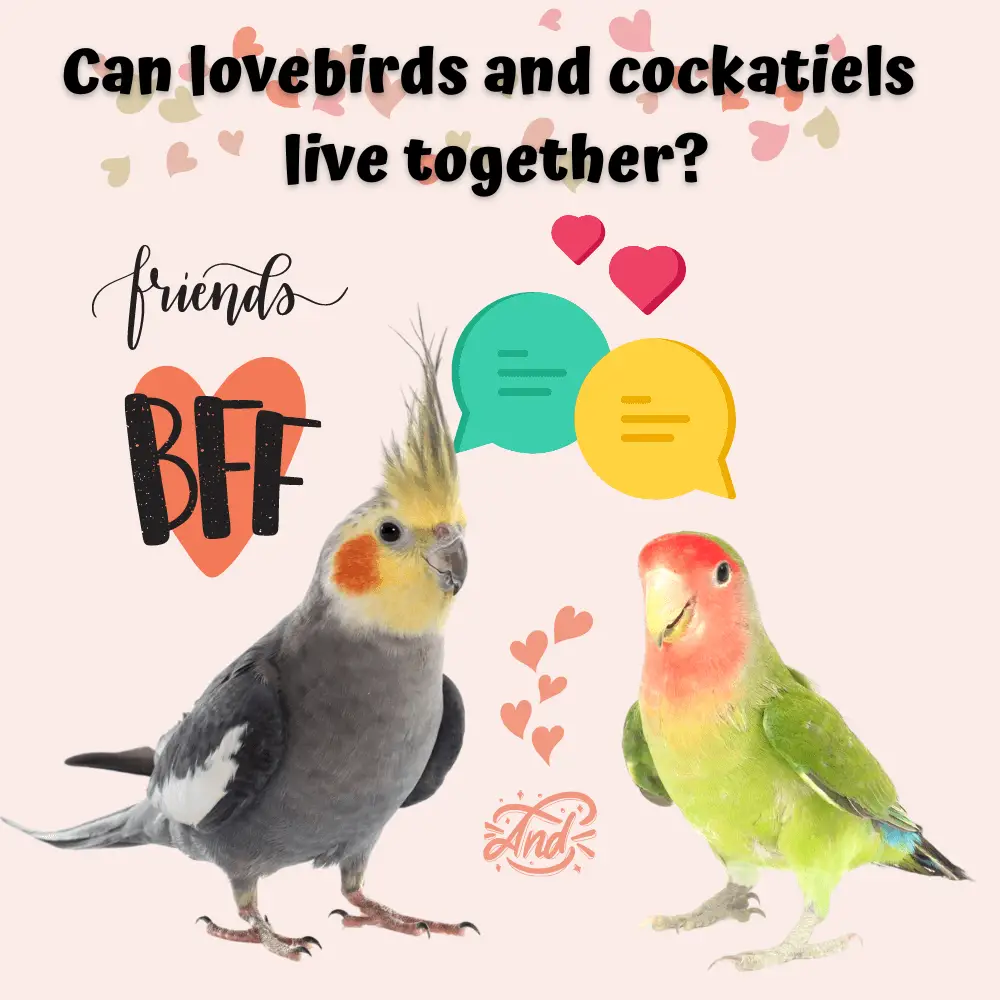Can lovebirds be kept with other birds: Lovebirds are birds of the parrot family, and are very popular. With their colorful plumage, they leave no one indifferent. They are increasingly adopted in France. If you keep lovebirds, you may have come to realize that these parrots are adorable and make great companions.
Their breeding must still be done under certain conditions. The question most lovebird owners have is which parrots they can cohabit with. This is a relevant question because, unlike their affectionate relationships with their congeners and humans, their relationships with other birds are always complicated.
What birds can live with lovebirds? Can lovebirds and parakeets be put together? Can lovebirds and cockatiels live together? In this article, we answer frequently asked questions about cohabitation with lovebirds and recall some recommendations to ensure the safety of your parrots.
Lovebird
Lovebirds are magnificent parrots that live in the wild in Africa. Small in size, they measure between 12 and 16 cm and weigh between 40 and 60 g. They are very small birds.
There are several species, the best known of which are: the Fischer, the Rosy-throat, and the Masked Lovebird. These birds are calm and affectionate in nature. They dislike noisy environments and prefer quiet.
They adore the presence of their master, and love when they are shown love and affection. As far as their diet is concerned, lovebirds feed mainly on various seeds, fresh fruits, and vegetables. They need a varied and balanced diet for their well-being.
Lovebird species

A lovebird cannot live alone. Intended to live in pairs or in groups, this bird can seem sociable par excellence. But what about its understanding of other birds?
If you’re hoping to find an ideal parrot species to keep your lovebird company, we have bad news for you. Any cohabitation between lovebirds and other species is unfortunately not recommended.
To begin with, the basic rule you should know is to never mix hooked beaks with straight beaks. This rule concerns more particularly species with territorial behavior, such as lovebirds, wavy parakeets, or celestial parakeets. These hooked beaks with a difficult character tend to protect their territory and fight to the blood for the slightest pretext.
As for lovebirds, any cohabitation, even within the hookbill family, is potentially dangerous. Any housemate is at high risk of being attacked and sustaining serious injuries from their powerful beaks.
Indeed, very affectionate with its master, the lovebird can be aggressive and violent with other parrots and even with representatives of its own species. In such confrontations, the classic blow of the lovebird is the amputation of the leg of his opponent with a single peck.
It is completely understandable that one would want to optimize space and enjoy a variety of species in his collective aviary, but experts and informed bird lovers are almost unanimous on this question: the cohabitation between lovebirds and other species of domestic parrots is to be avoided.
Given the likelihood of serious or even fatal injury, many breeders find it irresponsible to keep lovebirds living with any other species of parrot. And this is true even when the birds get along well. The atmosphere in your collective aviary may seem peaceful and secure to you, there is no guarantee that slippage is excluded. According to experience, sooner or later the situation deteriorates and the accident quickly happens.
Obviously, there is no absolute truth and cases of successful cohabitation exist. We can find testimonies of a good understanding between a lovebird and a green conure, a unicolor, or even an African grey parrot. Such cohabitations are exceptionally possible in large aviaries, but the exceptions only confirm the rule.
Can lovebirds live with other birds?
As we have seen, in general, any attempt to make lovebirds live together with other parrots in the same collective aviary can cause serious accidents.
Let’s take two cases of cohabitation that raise the most questions among novices: the possibility of putting the lovebirds with the budgies or with the cockatiels.
Can lovebirds and budgies live together?

It is common to want to put lovebirds and budgies together in a common aviary. These parrots are notorious for not getting along.
Although you can always find exceptions, the cohabitation between lovebirds and budgies is most often disastrous and has every chance of ending in the carnage. Both species being territorial, the likely scenarios are too pessimistic to take the risk and put your parrots in danger.
The budgerigar is a monospecific species par excellence, that is to say, a species that does not support sharing its living space with other species of parrots. Parakeets are also known to be very supportive when it comes to defending their territory or interests. In case of conflicts, they react as a group and gang up quickly against the “intruder”.
The lovebird also has a strong character and it is especially endowed with a very powerful beak. When it comes to another species, he looks for a fight and does not let it go. Know that a lovebird can break a parakeet’s pulp or even kill it with a simple peck before you even have time to intervene.
As a result, this cohabitation is very strongly discouraged, even completely excluded for many specialists, in any case in a cage or in an insufficiently sized aviary.
Can lovebirds and cockatiels live together?

Unlike budgies, cockatiels cohabit fairly easily with other species, as long as it’s not have hooked beaks. (Remember the golden rule explained above.) Thus, you can try to make your cockatiels live with Catherine parakeets, quails, melanure or Alexandra parakeets, kakariki… But not with lovebirds.
Known for being brawlers and killers, lovebirds are likely to hurt your cockatiels, break their pasta, or even kill them.
Even if you will surely find more testimonies of a successful cohabitation of lovebirds with cockatiels than with budgies, the risk is too high and unnecessary. It is better to consider another composition of your aviary, especially if you are a beginner.
That said, some experts will tell you that the cohabitation of lovebirds and cockatiels is possible, provided you separate the two species during the breeding season.
Quaker parrot and lovebird
SOURCE: African Grey Parrot Pet
Tips for successful cohabitation between lovebirds and other birds
If, despite the warnings, you are determined to try your luck and make the lovebird cohabit with other species, here are some tips that you must absolutely respect in order not to put your birds in danger. It is important to take these precautions to ensure the safety of all parrots.
Best configuration: everyone in their cage or aviary, common exits
As the direct cohabitation between lovebirds and other species is very problematic, you can try a compromise. Some breeders advise offering the parrots communal outings under close supervision while keeping individual cages as the main habitat for each species.
Placing different species in separate cages helps avoid territorial conflict and reduces the risk of fights.
Choose a large outdoor aviary
Experienced breeders are sometimes able to keep their lovebirds living with other parrots in spacious aviaries.
For the safety of all parrots, their living environment must be large enough. Therefore, in general, it is not recommended to over-populate the aviaries. In the case of a collective aviary where the lovebirds are supposed to coexist with other parrots, it must be several meters long and wide.
Here are some tips that will help you minimize the risk of conflicts :
- Provide a sufficient number of perches, bowls, and water points to exclude competition
- Install privacy screens to create separate spaces inside the aviary
- Eliminate all objects that can be used for nesting
- Put obstacles on the free-flight air
Make presentations remotely
To introduce new parrots into the aviary of your lovebirds, successful introductions are essential. Indeed, you should not rush the presentations. We recommend that you respect a quarantine period where the two parrots can see each other from afar.
Place the new companion in a cage close to the others for a few days so your parrots can get to know each other from afar. This will allow you to detect possible conflicts. Furthermore, it is strongly advised not to introduce new parrots during the breeding season. parrots are particularly nervous during this period and a conflict can quickly break out.
Take precautions during the breeding season
Generally speaking, the breeding season is the most dangerous time for multispecies cohabitation. This is even truer for lovebirds. Even if in normal times everything goes well in your collective aviary, the breeding season considerably increases the risk of slippage.
Competing for nesting sites, some lovebirds can defend their territory with incredible zeal. Their aggressiveness This is why all interactions between your feathered companions must be particularly monitored during this period. It is essential to separate the species to avoid massacres.
Lovebirds are adorable parrots with a particular temperament. Adorable companions for humans, extremely faithful in pairs, they are far from being easy roommates for other parrots. Cohabitations are possible, but not recommended. When thinking about the living conditions of your parrots, always think first of all about their interest and well-being. As a breeder, you are responsible for ensuring their safety and avoiding unnecessary stress.

